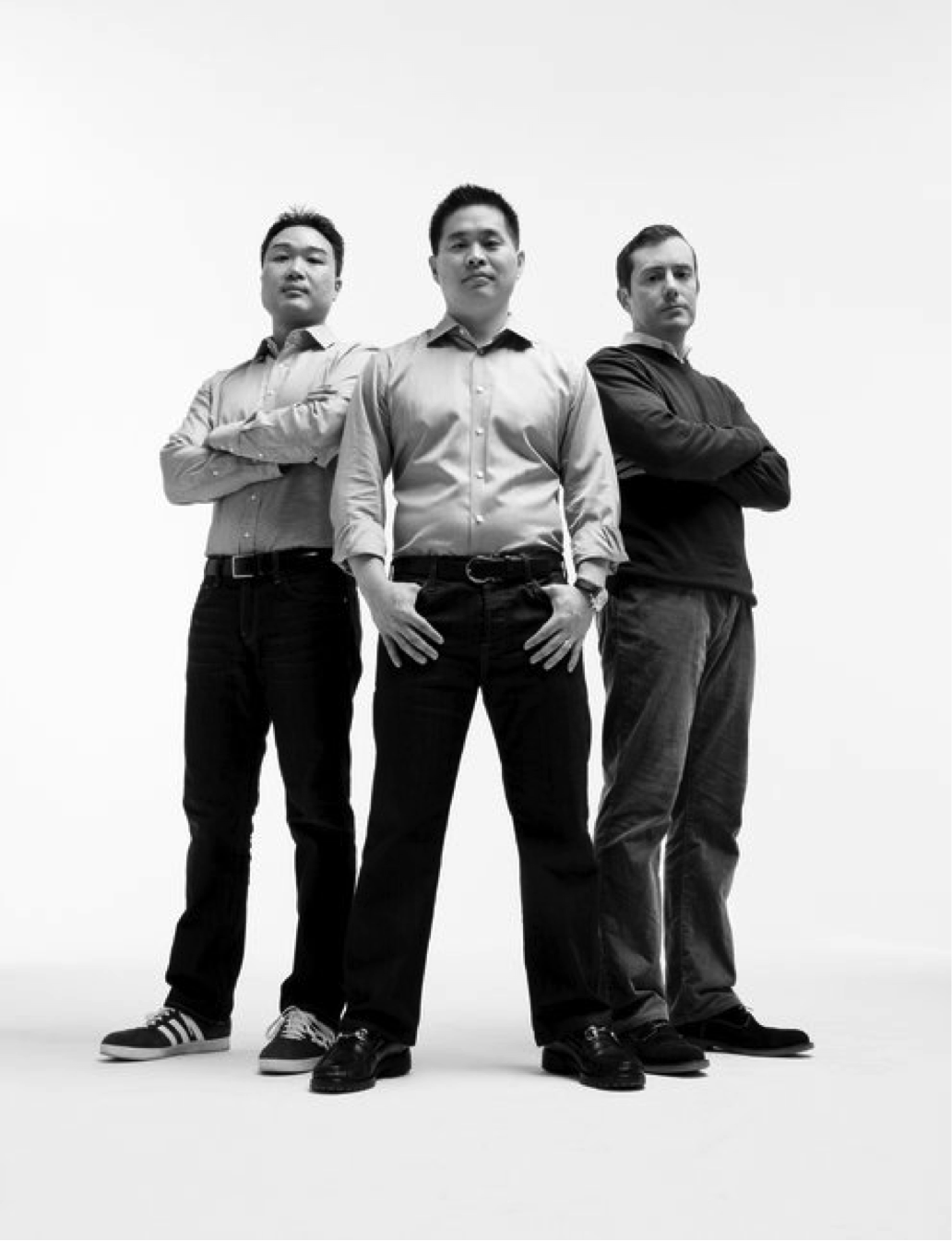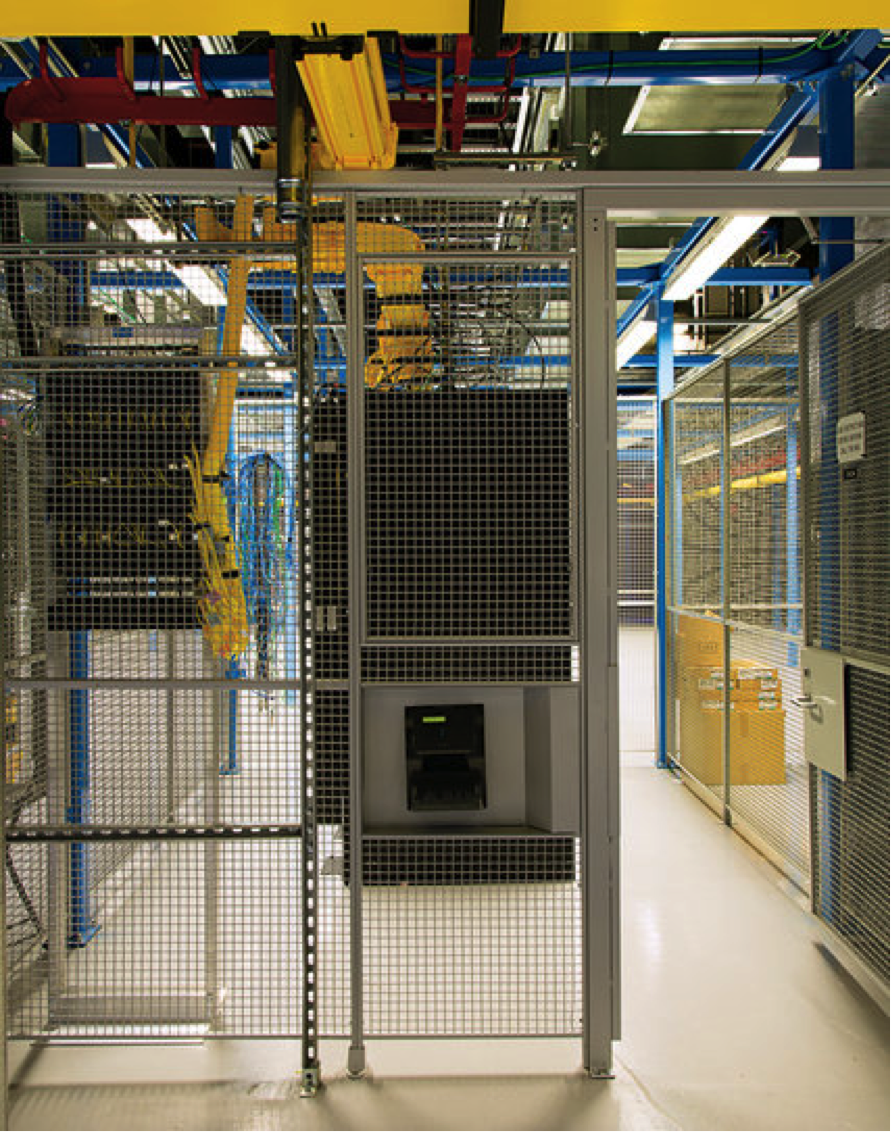Wolf hunters from Wall Street. Part 1

Adaptation from the book by Michael Lewis "Quick Boys"
Photo: from left to right: Rob Park, Brad Katsuyama, Ronan Ryan
Before the collapse of the US financial system in 2008, Brad Katsuyama could have assured himself that he was not responsible for this system. Brad worked at the Royal Bank of Canada (Royal Bank of Canada, RBC). Royal Bank was the fifth largest bank in North America, but no one on Wall Street took it into account.
It was a quiet, respectable place - in the near future, everyone will learn that its employees were able to resist the temptation to provide customers with unsecured loans or plunge them into the hands of ignorant investors. But the managers of the bank never wondered - in those rare moments when they thought about anything at all - how the RBC slowed down. Katsuyama's bosses sent him to New York from Toronto in 2002, when he was 23 years old - this was done as part of a “big dash” program designed to bring the RBC to Wall Street players. The bitter truth was that no one had heard of this bank there. "Canadians constantly say:" We too often give our money to the Americans, "says Katsuyama. “What they don’t understand is that Americans have to pay, because no one wants to work on RBC. RBC is an empty place. ”
')
Before arriving as part of the banking development program, Katsuyama had never seriously thought about working on Wall Street and living in New York. For him, this was the first lesson in the development of the American lifestyle, and he immediately put Brad to a standstill - so much New York was different from what Katsuyama was used to in Canada. “Everything here was abundant,” he says. “In the year I lived in New York, I met more boors than in all my previous life in Canada. People here lived beyond their means, they did not get out of debt. This shocked me the most. Debt was an unnatural concept for Canada. Debts were considered evil. ”
In the early years of his work on Wall Street, Katsuyama first sold shares of US energy companies and then securities of IT companies. As a result, he was offered to lead a group of traders at the Royal Bank of Canada - of about 20 people. In the RBC sales area, there was a “no-take-idiot” rule (in fact, among employees, this rule was even more vividly named): if someone came to the RBC in search of work, it turned out that this is a typical “habits” dumbass from Wall Street, he was never hired, no matter how much money he promised to bring to the company. There was even a special term in the corporate environment: “RBC-compatible”. Although Katsuyama considered him terribly Canadian, he, Brad, was also "RBC-compatible." Katsuyama believed that the best way to manage people is to convince them that your influence will have a positive effect on their career growth. He also believed that the only way to convince his subordinates of this was to actually contribute to their career growth.
His problems began by the end of 2006, after RBC acquired American company Carlin Financial, which specializes in electronic trading, for $ 100 million. According to Katsuyama, the entire transaction took place with excessive haste - his Canadian management acquired the firm, not knowing very little about Carlin Financial itself, or about electronic trading. Things began to take an alarming turn. Katsuyama found himself working side by side with a group of American traders who least of all fit into the framework of the RBC corporate culture. On the very first day after the merger, Katsuyama received a call from an agitated employee who whispered into the phone: "We have a guy here in the office with suspenders and a baseball bat." This guy turned out to be the executive director of Carlin Financial, Jeremy Frommer, who was anyone but not “RBC-compatible”. Returning to his alma mater, University of Albany, years later, in order to give a speech about the secret of his success, Frommer told a group of business course students: “It’s important not only to fly first class — I need to know that all my friends are flying in economy ".
New York-based RBC employees who moved to the Carlin offices soon had to attend a meeting at which Frommer was preparing to explain to everyone and everyone what is really going on in stock markets. At the meeting, Frommer stood in front of a flat monitor hanging on the wall. "He rises and says that now trading in stock markets is a matter of speed," says Katsuyama. "And then declares:" I am going to show you how fast our system works. " Next to him sits a guy with a keyboard. Frommer commands: “Enter an order!” The guy presses Enter. And the order appears on the screen. Frommer continues: “See! You see how fast !!! ”The guy just did what he entered from the keyboard the designation of the action, after which it appeared on the screen, just like if you were just typing text. “And then he continues:“ Let's do it again! ”And the guy presses Enter again. And everyone nods their heads. It was at 5 pm. The market has already closed; nothing happened to the shares. But Frommer just glowed at the thought: “O God, look, this is happening in real time!”
Katsuyama did not believe his own eyes. He thought: the guy from whom we just bought our new trading platform or does not understand that his demonstration of technical achievements is complete nonsense, or, even worse, thinks that we are not able to understand it.
Almost at the same moment that Carlin Financial invaded Brad Katsuyama, the US stock market began to behave strangely. Before RBC acquired it from, if I may say so, a work of art from the world of electronic trading, Katsuyama’s computers worked exactly as they should. And then they stopped. Previously, if Brad saw on the monitor screen that 10,000 shares of Intel are sold at a price of $ 22, he realized that he could buy these ten thousand shares of Intel at $ 22 per piece. He only needed to press a button. However, by pressing the button in the spring of 2007, he did not suspect that the deal would evaporate to nowhere. For all seven years of work on the stock exchange, he was sure that he could look at the monitor screen and see the current state of the market. Now what he saw on the screen has become a fiction.
Katsuyama could not work in such conditions. Its main goal, the trader, was to play the role of an intermediary between investors who wanted to buy or sell large volumes of shares and markets that worked with smaller volumes of securities. That is, say, an investor wants to sell a block of three million Intel shares, and there is a need in the market for only one million: in this case, Katsuyama should buy the entire block from an investor, sell a million right away and spin the next few hours like a squirrel in a wheel to attach the other two. But, not knowing the real needs of the market, Katsuyama could not set the price for a large block of securities - and now, no matter what happens on the screen of his monitor, Brad’s enthusiasm for continuing to work was getting smaller.
By June 2007, the problem had grown so that it was no longer possible to ignore it. Prior to this, Katsuyama did the same as most other users who have computer problems: he turned to tech support. The technical support staff acted the same way as they always and everywhere: they decided that Katsuyama had screwed it up by mistake somewhere. “First of all, these guys started talking about the“ human factor, ”Brad says. "As if traders are a bunch of village fools."

Building in Secaucus, New Jersey - Home for IEX Servers
Katsuyama was outraged so actively that tech support caused the developers, the guys who came to RBC after absorbing Carlin. “They said that all this is because I am in New York, and the stock market is in New Jersey, and my market data is outdated,” says Katsuyama. “Then they gave out that this is happening because, besides us, thousands more people trade on the market besides us. Like, I'm not the only one who is trying to do something with stocks. And still there are different events. And all sorts of news out. "
If everything is as you say, Katsuyama asked them, then why do market data cease to correspond to reality only when he, Katsuyama, tries to access them? For more convincing Brad forced the developers to stand behind him, staring at the monitor. "I said," Look carefully. I want to buy 100,000 shares of AMD. I want to pay $ 15 per share. Now there are 100,000 AMD shares on the market at this price - 10,000 on the BATS exchange, 35,000 on the New York Stock, 30,000 on the Nasdaq and 25,000 on the Direct Edge - everything is visible on the screen. So now we sit down and look very carefully at the screen, and I will put my finger on the Enter key. And when I count to five aloud ... "
"Time…
Two ... See, nothing happens.
Three ... Still fifteen dollars ...
Four ... No movement in the markets ... "
"Five". Then I clicked on Enter and - bang! - everything flew to hell. All offers have disappeared, and market prices have instantly gone up. ”
Katsuyama turned to the developers: "It seems that I am these very" different events. And "all sorts of news" is also, apparently, me. "

While you blink
High-frequency trading is a discrete process, it is formed by “micro-pushes”. The bottom line of this chart is stock market activity involving actions with General Electric shares for 100 milliseconds (0.1 seconds) at 12:44 pm December 19, 2013. The gray block - a five-millisecond window, during which GE stocks were actively sold and bought - during this time 44 transactions with stocks were carried out.
To this they have no answer. Katsuyama suggested that it was Carlin’s software installation that was to blame. “As the problem with market data became more acute, I began to realize that my nightmarish technologies were my real headache.”
But the more he communicated with Wall Street investors, the clearer it became that they faced the same problems. A close friend of Brad was trading shares in the large hedge fund SAC Capital from Stamford, Connecticut, famous (and notoriously famous in the near future) because he was always one step ahead of the US stock market. Katsuyama reasoned that if someone knew about the market more than him, it was someone from SAC Capital. One spring morning, he boarded a train to Stamford and spent the whole day watching his boyfriend’s bid. And I found out: despite the fact that his friend used software from Goldman Sachs and Morgan Stanley, he faced the same problem as RBC - by pressing a button in an attempt to buy stocks, he found out that the market had run far ahead. “When I saw how this guy trades and how he stays in the cold, I realized that this is not just my problem. My headache was the headache of the entire market. And then I thought: "Well, wow, how serious it is."
[ Continuing to translate the adaptation from the book by Michael Lewis "Fast Boys", written by himself for the New York Times, follows - approx. transl.]
Source: https://habr.com/ru/post/218975/
All Articles